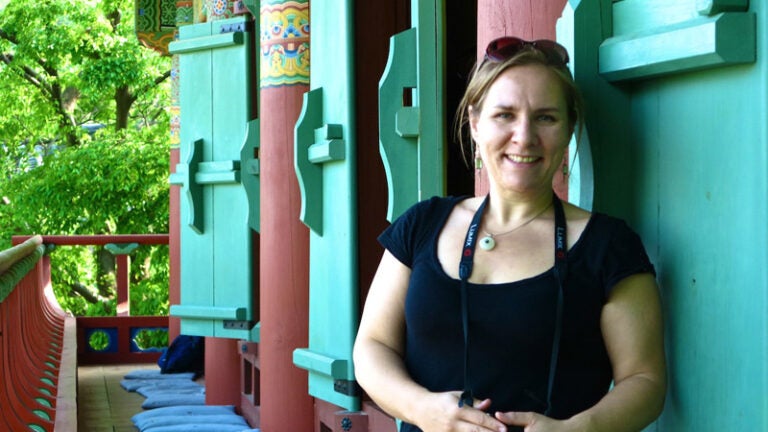
Ancient Buddhist texts reveal shifting perspectives on women
“… As for a woman who is born inside the imperial palace, she necessarily belongs to another person. Throughout her life, she is like a maidservant who must serve and follow a great family, also like a disciple who must venerate and serve his master. She is beaten by different kinds of swords and staves, rocks and tiles, and is defiled by every evil word. These kind [sic] of sufferings deprive her of self-sovereignty. This is why a woman must give rise to the thought of abhorring and getting rid of her female body.”
This passage is drawn from a popular 5th-century Buddhist text, the SuÌ„tra on Transforming the Female Form (Zhuan nüshen jing 轉女身經, T. no. 564), an extensive meditation on the reasons why a woman must transform her sex in order to become a Buddha.
According to the Buddhist tradition, women cannot ascend to the status of a Buddha — one who is awake, enlightened and emancipated from samsÄÂra, the cycle of birth and death.
Female bodies are seen as problematic because they grow and give birth to children, which ties them metaphorically to samsÄÂra. In order to attain Buddha status — to reach the ultimate goal of the religion — a woman is required to become a man. This means dying and being reborn as a man in the next life.
But in many Buddhist texts, including the Sūtra on Transforming the Female Form, this could also mean that an advanced practitioner of Buddhism, using her supernatural powers obtained through devotion and meditation, could miraculously change her form, in this life, at her own will. Such a display is usually accompanied by her offering the Buddha a long lecture on the fact that gender is empty and only the mind clings to such external forms as male or female.
A shifting ideology
This subject is the focus of Stephanie Balkwill’s research at USC Dornsife, where she is a Provost’s Postdoctoral Scholar and member of USC’s prestigious Society of Fellows in the Humanities. She has studied the lives of women, particularly Buddhist women, in 4th- through 6th-century China in depth.
Balkwill titled her postdoctoral research proposal “Because the Buddha is No Longer a Woman: Tracking the Ideal of Female-to-Male Sex Change in MahÄÂyÄÂna SÅ«tras.”
“I’m interested in the ways in which Buddhism, when it came to China from India and Central Asia, offered women new opportunities for social and religious practice that they didn’t have before,” she said.
While working on her doctorate at Canada’s McMaster University, Balkwill identified a body of Buddhist texts written in 5th-century China that shed light on how the problem of the female body within Buddhism was understood at the time. The SuÌ„tra on Transforming the Female Form, which claims to be the master text on the subject, represents a significant departure of thinking, she explained.
“It’s largely understood sociologically instead of bodily …. The Buddha starts talking about patriarchy instead of the physical limitations of the female body. So it’s a big shift in ideology.”
Women of influence
According to Balkwill, there were powerful Buddhist women in 5th-century China who were very interested in Buddhist monasteries, a place where they could derive power and negotiate the political situations in which women of high standing often found themselves.
It is likely that these women sponsored and commissioned these 5th-century texts, Balkwill noted. Some of the writings mention women of the imperial court specifically, pointing out that they are vulnerable to patriarchal forces in that they are put on a pedestal, given jewelry and garlands, but are still not free. These women lived with a lot of luxury, but also a lot of constraints.
“One of the things I’m really interested in with these texts, and why I think they appeal to women even though they’re saying you have to become a man, is that their [female] protagonists have wonderful conversations with all these different Buddhist teachers and eventually the Buddha,” she said. “The texts show how smart, capable and articulate the protagonists are.”
The various conversations about women’s rights and women’s bodies within the texts help scholars understand how women of the day thought and talked about the notion of female-to-male sex change and related it to their own religious practice.
Expanding her reach
Balkwill was drawn to her postdoctoral position at USC Dornsife as an opportunity to expand upon the specific training she received as a graduate student.
“I really strongly feel that you have to be able to go past that and talk outside of your discipline, and to your students and the general public,” she said.
As a member of USC’s Society of Fellows in the Humanities, an interdisciplinary community of postdocs supported by eminent distinguished faculty mentors, Balkwill participates in meetings and events on campus to promote intellectual exchange and an interdisciplinary approach to research and teaching. She also organized a major international conference last year on Buddhism and Politics, titled, Buddhism and Statecraft: A Conference of Storytellers.
“Having the opportunity to talk about my work with people in English literature or visual studies uncovers points of comparison and new ways of thinking about my data,” she said.
“I came to USC because I wanted to learn to talk about my research across the humanities and be a more open-minded scholar,” she added. “I’ve taken the skills that I learned as a graduate student and have become more integrated in the field and am thinking more broadly.”